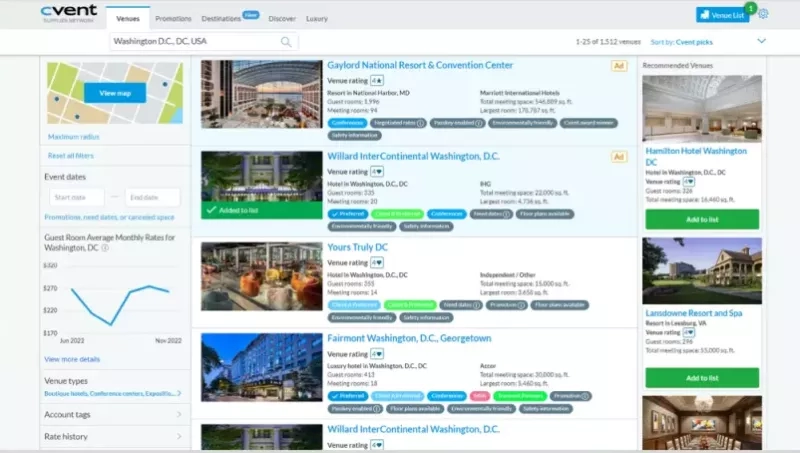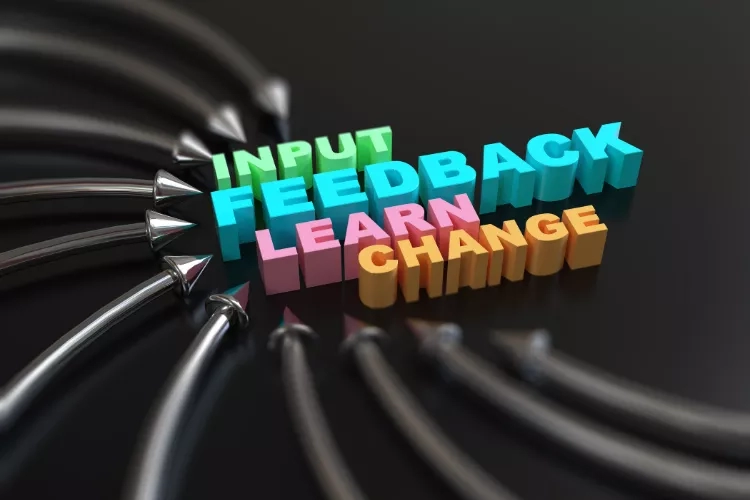With so many steps that go into planning an event, just keeping track of all your to-dos can be a lot of work. An event planning checklist can help you stay on track as you work through each phase of your event.
To help you create your own event planning checklist, we've put together a step-by-step guide with key tips and strategies to ensure your event's success.
Contents:
Tips for creating your event planning checklist
There are many things to consider when planning an event. To help you get started, here are ten essential elements to include in your event planning checklist:
- The event’s goals and objectives
- The proposed date of the event
- The budget
- Sustainability
- Speakers and sponsors
- Website and registration
- Venue and suppliers
- Technology solutions
- Event day set-up
- Tracking, measurement, and evaluation
We’ll now delve into some of the tasks that make up many of these factors in more detail. Consider what’s relevant to your event and where each task fits within your timeline.
Pre-event checklist
Define Your Event’s Goals and Objectives
To start, it’s crucial to identify your event’s goals. What are your short-term and long-term objectives?
Does the event need to communicate a particular message, drive new sales leads, reward and motivate employees, or something else?
Once you’re clear on your event’s goals, identify your target audience. This will help to determine the topics, content, speakers, and promotional channels you’ll need.
Establish Your Budget
If you have held this event before, you can use your previous event budget to set a baseline. However, you’ll need to ensure that inflation, supply-chain price increases, and any new factors, such as digital add-ons and sustainability requirements, are taken into consideration.
To finalize your budget, you’ll also need a comprehensive list of all cost items in the event lifecycle. So, reach out to suppliers early for quotes.
Learn more: The Ultimate Event Budgeting Guide for 2023
Create a Timeline
The amount of time you’ll need to plan and execute events will depend on the type and size of the event.
For a small event, your timeline may only need to be a couple of months. Whereas for larger conferences with thousands of delegates, your event timeline could run for up to a year, with multiple planning phases and deadlines.
By creating an accurate timeline of every stage and step of planning, you can ensure that suppliers are onboarded, and venues are secured well in advance whilst also keeping on track with the budget.
Create a timeline that includes regular meetings to provide updates – this will provide transparency to senior leadership on the planning process so that everyone is aware of what needs to happen and when.
Select Your Venue
Searching for venues, sending out RFPs, and compiling shortlists can be time-consuming.
But you can use technology to speed up the process. Venue sourcing tools, like the Cvent Supplier Network, help to standardize and automate the sourcing process. You can compare venue quotes along with their availability and considerations such as accessibility and sustainability policies.
You can filter and customize venue searches by location, total meeting space, safety information, outdoor meeting space, bedrooms, venue type, and more.
Set your goals, budgets, and contract terms upfront. From the first interaction to your initial site visit, you should be partnering with a venue that is fair and easy to communicate with, making negotiation and planning an easy process.
Accessibility, Diversity, and Inclusion
Creating an accessible event means designing it to be open to anyone regardless of their physical challenges or hidden disabilities.
Similarly, inclusion means making everyone feel welcome in a diverse setting that supports equity for all those involved.
With over a billion people, or 16% of the world’s population, experiencing some form of disability, making your events more accessible and inclusive is both a moral and legal obligation.
So, invest the time and effort to find out what attendees may need from you or your chosen venue. And keep accessibility in mind when you're planning the onsite experience, as well as registration, virtual elements and post-event feedback.
Event logistics checklist
Create an Agenda
Define the structure of your event and how the agenda may work. Will you have multiple content tracks running at the same time or one main keynote followed by a series of workshops?
Consider how the content will be presented, how the rooms will be laid out, how attendees will move between sessions, and what technology you’ll need so that your attendees can engage with the speakers on stage.
Launch Registration
With event technology, creating a custom event registration website has never been easier.
Tools like Cvent Registration mean that you don’t need any technical expertise - and you certainly don’t need to learn HTML. You can build a complete registration website from scratch with a simple drag-and-drop tool.
Plan Food and Beverage
When planning the event’s food and beverage needs, consider more sustainable choices and ways to reduce wastage, such as arranging the donation of leftovers to those in need.
Menu choices, timings, and how your food and drink is served (buffet style, table service, etc) should be aligned with both your overall goals, the number of attendees, and how your agenda has been designed.
Check that glasses, water, and snacks are available for presenters and performers both on stage and backstage.
Coordinate Event Staff
Are your event staff clear on timings and the dress code? Do they know what to do should an emergency occur?
Schedule briefings for all event staff so that they know what’s happening and when, plus the answers to any questions guests may ask.
Agree on specific roles and responsibilities and make sure your event staff knows whom to go to if they have a problem.
Plan Your Event Technology
What technology will you need to achieve your event objectives?
When it comes to the attendee experience, a mobile event app will allow you to analyze attendee engagement with in-app features such as voting polls and feedback forms.
Onsite lead capture technology lets you or your exhibitors or sponsors capture someone’s business details by scanning a QR code, name badge, or business card. They can then qualify, rate, and add notes for each lead stored in the app.
Make sure that the technology you deploy to enhance your event by better understanding your visitors integrates with your marketing tech stack. By ensuring that data syncs seamlessly with your CRM system, you’ll save time on data transfer and allow for faster lead follow-up by your sales team.
Event marketing and promotion checklist
Create an Event Marketing Plan
Your marketing plan should start when you begin the event planning process. After all, without a great promotion strategy, no one will know about your event.
Your plan should ideally feature email campaigns, digital marketing, social media, PR coverage, and more. Make sure that you’ve allocated the right amount of budget to support your marketing efforts.
Learn more: Event Marketing: The Definitive Guide (2023)
Organic Social
Post regularly where your audience is. Organic social should be informative, FOMO-inducing, and double-up as a customer service tool.
If you’re running a B2B event, you may already have a community on LinkedIn that would interested in receiving updates.
If you run a local community event, your attendees may spend more time on Facebook or Instagram.
Paid Social and Paid Search
For targeted reach, invest in paid social and paid search to get tailored messaging to a specific cohort of potential attendees.
Personalize your event marketing message to focus on why people should attend your event. Be sure to include clear calls to action in your campaigns, such as ‘visit our website,’ ‘sign up for our newsletter,’ ‘find out more,’ or ‘register your interest.'
Email Marketing
Email marketing’s ability to hit the right people at the right time is unrivaled. An event email marketing tool will make it easier for you to design, automate, and send out targeted campaigns to promote your event.
When planning, don’t overdo it. If you create attention-grabbing subject lines, you’ll get those open rates, but if you spam attendees, they’ll unsubscribe.
Onsite management
Ensure Smooth Check-In and Registration
Providing a great onsite experience starts with smooth registration and check-in.
Use registration technology to deliver a contactless, self-serve check-in and on-demand badging experience so that you don’t need to print name badges unnecessarily.
Brief all registration staff. Ensure they know where pre-registered attendees, VIPs, on-site ticket sales, and exhibitors should be directed to.
When an attendee arrives at your onsite registration desk, train staff to identify when a person needs additional time to respond or help with information, directions, or the printing of their badge.
Coordinate Speakers
Ensure presenters are rehearsed and briefed on specifics such as cues, signals, what time to get ‘mic’d up,’ and who will collect them from the green room.
Build in rehearsal time for virtual as well as in-person speakers and make sure everyone knows how to access questions submitted via the app and how to engage with both viewers online and those seated in the auditorium.
Emergency and Contingency Planning
There are always steps you can take to be more prepared by ensuring processes are in place to allow for calm decision-making and agile action when the unexpected arises.
Using a single platform to gain better visibility over your entire event will allow you to make accurate decisions faster.
Learn more: Event Planning Guide: How to Plan for the Unexpected
Post-event checklist
Collect Feedback
Whether you want to track attendee satisfaction levels, allow audiences to score your speakers, measure ROI, or identify new ways to increase audience engagement, survey software allows you to collect feedback before, during, and after your events.
Provide On-Demand Content
Decide what content will be filmed and made available on-demand post-event, what will remain only available for those attendees ‘in the room,’ and what ‘premium’ content could be gated and charged for.
Striking the right balance can provide your event with year-round engagement, create more reasons to attend, and generate an additional revenue stream.
Evaluate Event ROI
Different event types will have different KPIs, so it’s important that you identify what worked and where improvements can be made throughout the entire event.
For example, you could determine the success of your trade show booth by the number of qualified leads or pre-scheduled appointments, but you’ll judge an internal event differently, and success may be measured on your handling of the budget or the feedback from attendees.
Data gained throughout your event management process will help you to build a clearer picture of your performance. Live polling through your event app is a great way to find out how attendees felt about a particular speaker, session, or your content overall.
Conduct a Post-Event Analysis
Once the dust has settled on your event, review every element of your planning checklist and evaluate what worked, what you could have done differently, and where improvements can be made for next time.
Items such as your budget, contingency plans, data generated from your event, and your feedback surveys will form the basis for next year, so make sure that everything is stored within a single online system that everyone in your team can access.
Organize your events with this event planning checklist
Use this guide as a reference and customize it according to your event needs. It will help you to prioritize your tasks before, during, and after the event.











